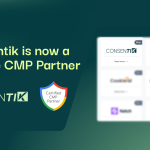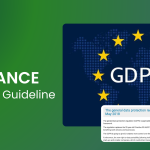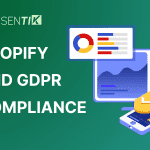Got EU visitors on your Wix site? Then GDPR Wix compliance isn’t optional – it’s required. Here’s the reality: that simple contact form collecting emails? You’re processing personal data. A newsletter signup? Personal data. Even basic analytics tracking? You guessed it – personal data. And GDPR doesn’t care where your business is located. If Europeans visit your site, these rules apply to you. The fines are serious, up to €20 million or 4% of revenue – but the real damage is losing customer trust. Ready to protect your business and build visitor confidence? This guide shows you exactly how to make your Wix site GDPR-compliant, step by step.
Why GDPR Matters for Your Wix Site
GDPR went live in May 2018, and it changed how businesses handle personal data forever. The law gives EU residents real control over their information. More importantly, it doesn’t care where your business is located.
Here’s what catches many site owners off guard: GDPR follows the user, not you. A freelancer in Thailand or an online shop in California still needs to comply if they have EU customers. There are no exemptions for small sites or solo businesses. Regulators have fined small websites and individual entrepreneurs for violations.
The regulation’s reach is actually a good thing in disguise. When you comply with GDPR, you’re also in good shape for other privacy laws. Brazil’s LGPD, California’s CCPA, and similar regulations around the world follow GDPR’s lead. Getting this right once helps you everywhere.
But there’s another reason to care about GDPR beyond avoiding fines. Today’s internet users are savvy about privacy. When you show respect for their data through clear notices and real choices, you build trust. That trust turns visitors into customers and customers into repeat buyers.
Understanding Your Role vs. Wix’s Role
Wix has GDPR-compliant tools built into its platform. But using Wix doesn’t automatically make your site compliant. You have to set up and use these tools correctly.
Here’s what you need to know: In GDPR terms, you’re the data controller and Wix is the data processor. You decide what visitor data to collect and why. Wix stores and manages that data based on your instructions. Wix states this clearly: “Wix provides all the tools to create a GDPR compliant website, but can’t guarantee that the site will be compliant. The site owner is in charge of what happens to the data collected from their site visitors.”
Your responsibility includes:
- Setting up cookie consent banners
- Creating a proper privacy policy
- Configuring data collection forms
- Managing visitor data requests
- Ensuring third-party tools are compliant
Wix gives you the tools. You need to use them. Check Wix’s Data Processing Agreement to understand what Wix handles as your processor. Then make sure your own practices – privacy notices, consent forms, and data handling – follow GDPR rules.
Making Your Wix Website GDPR Compliant
Let’s get practical. Compliance involves legal documentation, user experience adjustments, and how you manage data behind the scenes. Here’s your step-by-step roadmap.
Step 1: Create a Real Privacy Policy
Transparency sits at the heart of GDPR. You must tell visitors clearly how you collect, use, store, and share their personal data. The standard way to do this is through a privacy policy that’s easy to find on your site – usually linked in the footer.
Your privacy policy needs to cover these areas:
- What data you collect. List everything: names, emails, IP addresses, purchase info, cookies, analytics data. Be specific: “We collect your name and email when you fill out our contact form.”
- How and why you collect it. Example: “We collect your email through our newsletter signup to send weekly product updates,” or “We use Google Analytics to see which pages get the most views.”
- How you use and share it. Name your third-party tools: payment processors, email services, analytics platforms. Note that Wix stores data on servers in the USA, EU, and Israel, meaning data crosses borders with proper protections.
- User rights. Explain how visitors can access, correct, or delete their data. Provide a contact email for privacy requests.
- Cookies and tracking. State what cookies your site uses (analytics, ads, etc.) and link to your cookie consent banner.
- Policy updates. Tell visitors you may update the policy and how you’ll notify them of changes.
- Contact information. Include your business name and contact details for privacy questions.
Wix offers a Privacy Policy Generator in your dashboard (Settings > Privacy & Cookies). It helps create a basic policy based on your site’s features. Use it as a starting point, but customize it to match what you actually do. Generic templates don’t cut it – your policy should reflect your real practices.
Here’s the thing: Wix’s basic template gives you a starting point, but it doesn’t cover everything. If you have visitors from California, Europe, and Brazil, you need CCPA, GDPR, and LGPD all in one policy. Wix’s generator doesn’t automatically do that – you’d have to figure out each law yourself and add it manually.
And it gets trickier. Wix’s tool doesn’t know which apps you’ve installed. Using Google Analytics? Mailchimp? Stripe for payments? You’ll need to write those sections yourself. Most people either skip them or copy generic text that doesn’t match their actual setup.
That’s why Consentik created a free privacy policy generator that handles these gaps.
It covers multiple privacy laws at once – GDPR, CCPA, LGPD – so you’re protected no matter where your visitors are from. It includes ready-made sections for common tools like analytics, email marketing, and payment processors. Just select what you use, and it writes the legal language for you.
It takes about 5 minutes. No email required, just download and add to your Wix site. Wix’s generator works fine for super simple sites. But if you’re collecting emails, running ads, or selling products internationally, Consentik fills in what’s missing.
Step 2: Set Up Cookie Consent
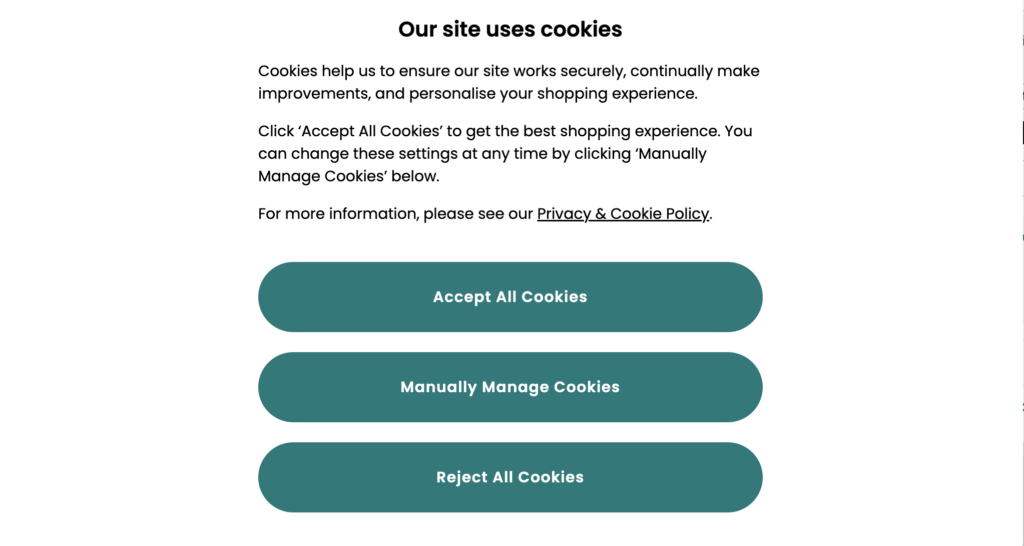
Method 1: Set Up Manually (Not Recommended)
Cookies are small files websites use to remember login status or track visitor behavior. GDPR requires consent before setting most cookies, especially for analytics or advertising. Here is how to set things up:
- Enable Wix’s cookie banner: Go to Settings > Privacy & Cookies > Cookie Banner. Turn on “Display cookie banner” and customize the text to explain what cookies you use and why.
- The banner must appear before non-essential cookies load. Visitors must actively agree – not just scroll past. Wix’s banner blocks cookies until consent is given.
- Customize the banner: Adjust appearance, button labels, and text. Keep language simple. Instead of “We utilize cookies to optimize user experience,” say “We use cookies to improve your visit.”
- What needs consent: Essential cookies (like shopping cart) don’t need consent. Analytics, advertising, and social media tracking cookies do.
- How Wix handles it: Wix automatically manages cookies from its own features and App Market apps. For custom code or external scripts (like Google Tag Manager), categorize them so the banner blocks them until consent is given.
Method 2: Set Up Using a Third-Party Tool (Recommended)
Setting up cookie consent manually can be tricky. That’s where Consentik GDPR Cookie Banner comes in – a Google CMP Partner designed specifically for GDPR, CCPA, and privacy compliance. Here is what Consentik does:
- Auto-blocks tracking scripts. Your Wix cookie banner might not catch everything. Consentik automatically blocks Google Analytics, Facebook Pixel, and other trackers until visitors consent. No scripts slip through.
- Works with major platforms. Full integration with Google Consent Mode V2, Microsoft Consent Mode (Clarity), and IAB TCF v2.2. This means your ads and analytics keep performing even when users decline cookies – thanks to anonymous aggregate data.
- Multilingual support. EU visitors from France, Germany, Spain? The banner automatically displays in their language. GDPR requires consent in a language users understand – Consentik handles this automatically.
- Customizable design. Choose from built-in templates or customize colors, layouts, and text to match your Wix site. The banner doesn’t look like a generic legal popup – it feels like part of your brand.
- Tracks consent properly. Detailed logs show who consented to what and when. If regulators check your compliance, you have documented proof with timestamps and user choices.
- Increases consent rates. Block site interaction until visitors make a choice. Show clear cookie categories explaining what each does. When people understand the benefits, they’re more likely to accept.
Learn how to set things up here. 
Wix’s built-in cookie banner covers the basics. But Consentik goes further:
- Better blocking: Catches third-party scripts Wix might miss
- Compliance reports: Dashboard shows consent rates and patterns
- Regional rules: Automatically applies GDPR, CCPA, or LGPD based on visitor location
- Performance tracking: See how consent choices affect your analytics and ads
Step 3: Get Permission for Marketing Emails
You can’t add people to your mailing list without their permission. It’s that simple. The consent rules:
- Don’t use pre-checked boxes. The checkbox must start empty.
- Users must actively tick the box to opt in.
- Make it clear what they’re agreeing to.
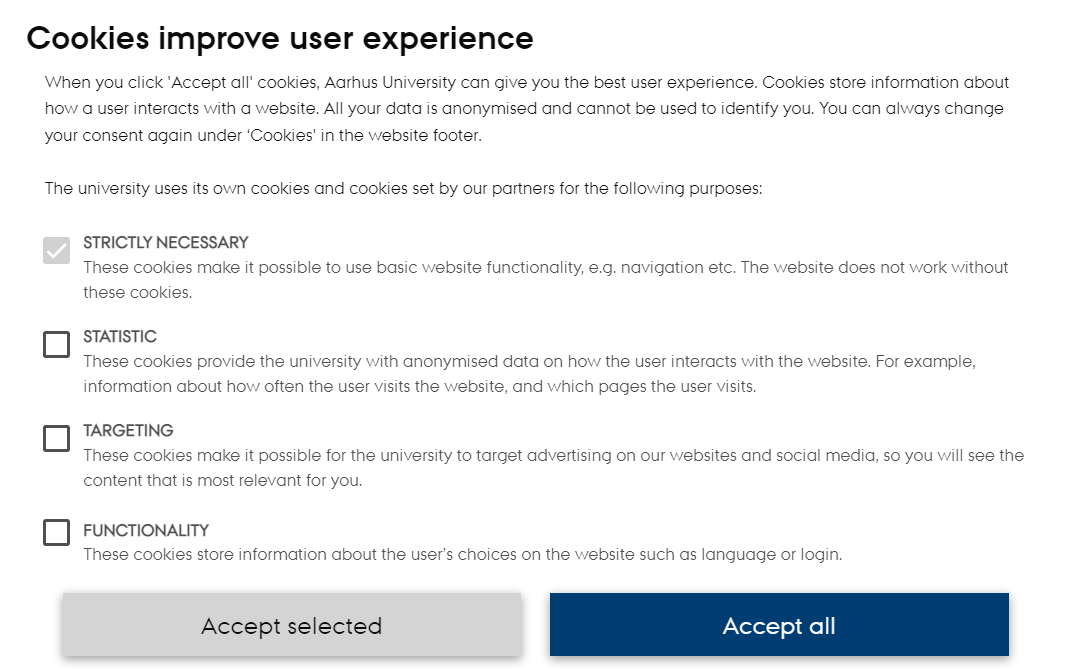
For example:
- Bad: “Keep me updated”
- Good: “Send me weekly emails about new products and offers from [Your Business]”
If you use Wix’s built-in forms (like Contact Form or Subscribe form), enable the checkbox option for marketing consent. Go to the form’s settings and add a clear opt-in field. Don’t hide it in fine print or combine it with other agreements.
For email marketing tools, make sure they’re also set to require explicit consent. Most reputable services have GDPR settings you can enable.
Keep records of who consented and when. This documentation protects you if someone later claims they didn’t agree to receive emails. Wix’s contact management system tracks when people join your list, which helps with recordkeeping.
Also respect unsubscribe requests immediately. Every marketing email must include an easy unsubscribe link. When someone clicks it, remove them from your list right away – not “within 10 business days” but immediately.
Step 4: Collect Less, Protect More
Build privacy into your site from the start. Here’s how:
- Ask for only what you need. If you just need an email for a newsletter, don’t also ask for phone numbers, addresses, and birthdays. Each extra field means more data to protect.
- Use privacy-friendly defaults. Don’t make optional fields required unless you truly need them.
- Keep connections secure. Wix uses HTTPS by default, which encrypts data. Don’t turn this off.
- Delete old data. Don’t keep information forever. If someone bought from you three years ago and hasn’t returned, you probably don’t need their data anymore.
- Anonymize where possible. Use anonymized IP addresses in analytics. You still get insights without storing personal identifiers.
Less data stored means less risk if something goes wrong.
Step 5: Handle Data Requests
 People have the right to see or delete their data. Here’s how to handle it: Access requests (someone wants a copy of their data):
People have the right to see or delete their data. Here’s how to handle it: Access requests (someone wants a copy of their data):
- Go to Settings > Privacy & Cookies > Visitor Data
- Click “Get a copy of their data”
- Enter their email or phone number
- Wait 48 hours for Wix to compile the file
- Download it and send it to them
- Verify their identity first – make sure the email matches
Deletion requests (someone wants their data deleted):
- Go to Visitor Data > “Delete their data”
- Enter their email or phone
- Wait 48 hours for Wix to complete deletion
- Delete their data from any third-party tools you use (Wix only deletes from its own system)
- Send them a confirmation email
Keep a log: Track all requests. GDPR requires responses within 30 days – Wix’s 48-hour process makes this easy.
Step 6: Check Your Third-Party Tools
Using Google Analytics? Facebook Pixel? Chat widgets? You’re responsible for making sure they’re GDPR-compliant too. Your checklist:
- Check compliance. Look for a GDPR statement from each service. Google and Facebook have them. Smaller tools might not.
- Turn on privacy features. In Google Analytics, enable IP anonymization. Make sure your cookie banner blocks these tools until visitors consent.
- Sign agreements. Most services offer Data Processing Agreements. Accept them in your settings.
- Control cookies. Wix’s banner handles many apps automatically. For custom code, categorize it (advertising, analytics, functional) so the banner knows what to block.
- List them in your privacy policy. Tell visitors which third-party tools you use and what data they collect.
- Remove unused tools. Disconnect apps you’re not using. They’re a security risk.
Wix says it clearly: “You are responsible for any third-party apps or services on your site. Make sure they’re GDPR compliant.” Not sure about an app? Contact the provider or find a privacy-focused alternative.
Step 7: Keep Everything Updated
GDPR compliance isn’t a one-and-done task. Regular checks:
- Adding a new form? Review these steps.
- New integration? Update your privacy policy.
- Changed data collection? Update your cookie banner.
Keep records:
- Save privacy policy versions
- Note when you enabled features
- Log all privacy requests
Stay informed: Check Wix’s Privacy and Security Hub for updates. Follow GDPR news. If regulations change, you’ll know what to do.
Train your team: If you hire help, teach them these privacy basics. Everyone handling customer data needs to understand GDPR.
What Happens If You Are Not Wix GDPR Compliance?
Following all these steps takes time and effort. You might wonder if it’s worth it. Let’s talk about what happens if you don’t comply.
GDPR fines can reach €10 million or 2% of global turnover for less severe violations. For serious breaches, penalties jump to €20 million or 4% of global turnover. These aren’t empty threats. Regulators have fined companies billions collectively, including big names like Google and Meta.
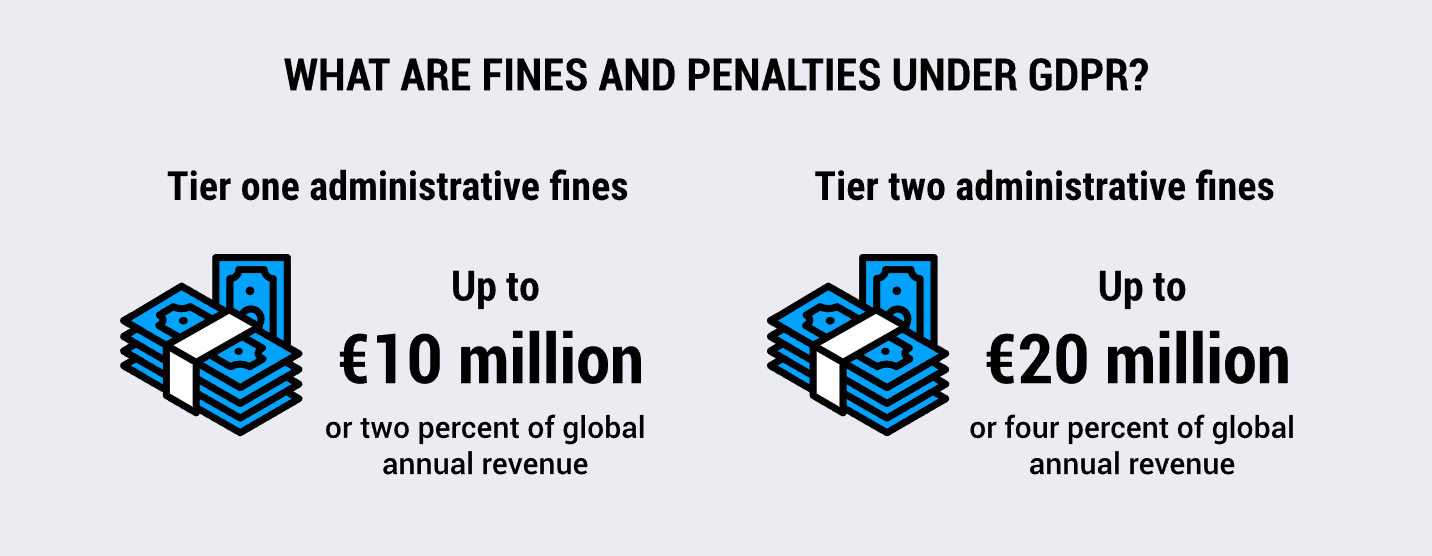
But small businesses aren’t safe either. Smaller firms and individuals have received fines of tens of thousands of euros for things like unsecured data or unlawful tracking. The size of your operation doesn’t protect you.
Beyond fines, there’s the trust factor. A data breach or privacy violation can destroy your reputation. Today’s consumers are privacy-conscious. They notice when sites respect their choices and when they don’t. One privacy mishap can send customers to competitors who handle data better.
On the other hand, when you build GDPR compliance into your Wix site, you improve user experience. Visitors see you’re transparent and offer real choices. They’re not surprised by hidden trackers or unwanted emails. This builds confidence.
People who willingly subscribe knowing what to expect are more likely to engage with your content. They’re more likely to make purchases. They’re more likely to recommend you to others. Privacy compliance isn’t just about avoiding problems – it’s about creating better relationships with your audience.
Use a Wix Privacy Policy Generator to Save Time
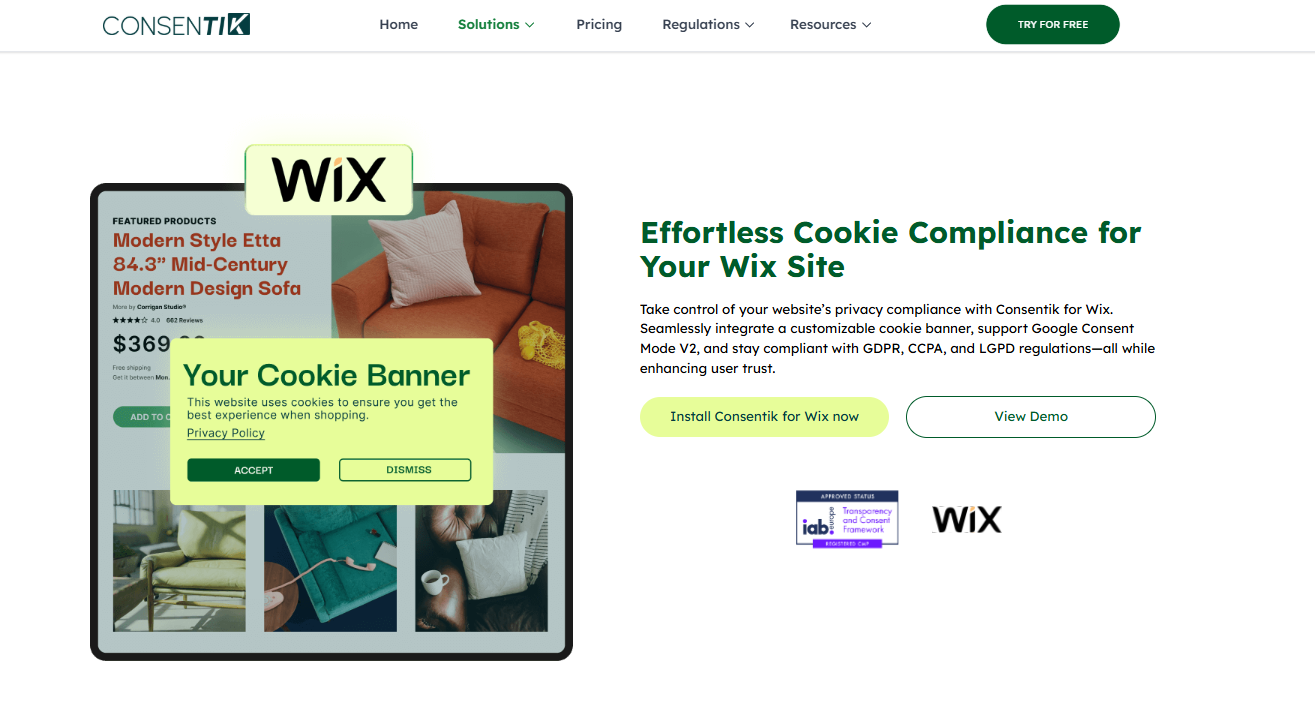 Creating a privacy policy is step one. But real GDPR compliance needs more than just documentation – you need tools that enforce what your policy promises.
Creating a privacy policy is step one. But real GDPR compliance needs more than just documentation – you need tools that enforce what your policy promises.
That’s where Consentik comes in. It’s a complete privacy compliance solution built specifically for platforms like Wix.
What Consentik Offers for Wix Sites
- Cookie Consent Banner (The Core App)
The Consentik GDPR Cookie Banner does what Wix’s basic tools can’t:
- Auto-blocks tracking scripts until visitors consent—Google Analytics, Facebook Pixel, everything stays off until permission is granted
- Google Consent Mode V2 integration keeps your ads performing even when users decline cookies through anonymous data collection
- Multilingual support shows banners in your visitor’s language automatically (required for GDPR)
- Consent logging provides timestamped proof of who agreed to what—critical if regulators check your compliance
Install from Wix App Market or visit consentik.com/wix
- Free Privacy Policy Generator
Need a policy that actually covers GDPR, CCPA, and LGPD simultaneously? Consentik’s generator handles what Wix’s basic template misses:
- Covers multiple privacy laws in one document
- Includes pre-written sections for Google Analytics, Mailchimp, payment processors, and 50+ common tools
- No email required – generate and download instantly
- Professional templates for e-commerce, blogs, service businesses
- Cookie Checker Tool
Not sure what cookies your Wix site is actually setting? This free cookie scanner finds:
- All cookies loading on your pages (even ones you forgot about)
- Which cookies need consent vs. which are essential
- Third-party trackers you didn’t know were there
- Gaps between what your privacy policy says and what’s really happening
- Google Consent Mode V2 Checker
Using Google Ads or Analytics? This tool verifies your Google Consent Mode setup is working correctly:
- Confirms consent signals are firing properly
- Checks if your configuration meets Google’s requirements
- Shows which consent parameters are active
- Helps troubleshoot implementation issues
Why Use All Four Together?
Think of GDPR compliance as a system, not a checklist:
- Your privacy policy (from the generator) explains what you do.
- The cookie banner (the app) enforces those promises in real-time.
- The cookie checker confirms you’re not missing anything.
- The Consent Mode checker ensures your Google tools stay compliant.
Each piece solves a different part of the compliance puzzle. Use them together and you’re not just following rules you’re building actual trust with visitors.
Final Words
GDPR compliance on Wix comes down to four things: be transparent, get consent, honor data requests, and protect what you collect. Wix gives you the tools – privacy center, cookie banner, form settings, and data management. But you need to set them up and use them correctly. Start today:
- Create your privacy policy
- Enable the cookie banner
- Fix your email opt-ins
- Check third-party tools
These steps protect you from fines and build visitor trust. In a privacy-conscious world, that’s good business. Your visitors will appreciate knowing their data is safe. Take action now! It pays off long-term.

